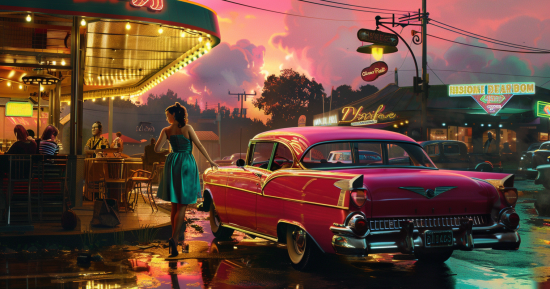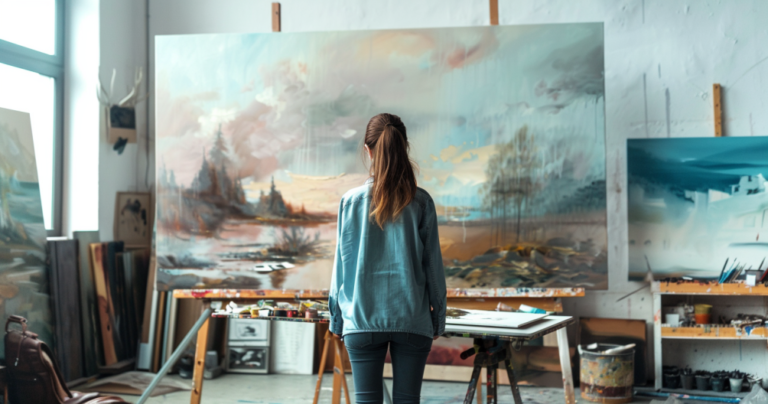As the season of renewal and vibrant colors, spring provides the perfect backdrop for your watercolor journey. You’re stepping into a world where the palette shifts from the muted tones of winter to the lively hues of blooming flowers and lush landscapes. Imagine capturing that moment when the first buds open with a swirl of paint.
Spring Watercolor Art
Spring watercolor art invites you to explore simple and intricate scenes, each reflecting the season’s freshness. Whether you’re drawn to painting delicate flowers, dynamic landscapes, or whimsical scenes, spring is full of inspiration. It’s a fantastic opportunity to practice layering light and dark colors or experiment with new techniques to enhance your artistic skills.
Essentials of Spring Watercolor Art
Understanding Watercolor Paints
Watercolor paints are known for their translucent quality, creating beautiful, soft washes. You’ll want to start with a basic set of colors, including primary hues and a few earth tones. Tube paints offer intense pigment and are perfect for mixing vibrant springtime colors, while pan paints are more portable and convenient for beginners. Experimenting with both can help you find your preference.
When mixing colors, use a palette to avoid wasting paint. Playing with ratios will yield new shades, adding depth to your spring scenes. Always practice with small quantities to get comfortable with blending and layering techniques.
Selecting the Right Paper
The paper you choose is crucial in your watercolor artwork’s final look. Select a medium such as cold-pressed paper with a slight texture, ideal for most spring watercolor projects. It holds water well and allows you to layer pigments effectively. Hot-pressed paper has a smoother finish for more detailed work, offering crisp lines.
Paper weight matters, too; aim for 140 lb or heavier to withstand washes without buckling. Practicing different types will help you discover your preferred style, but using higher-quality paper for more significant projects is generally advisable.
Brush Types and Their Uses
Your choice of brushes impacts your painting technique and results. Round brushes are versatile and suitable for both fine lines and broad strokes. They’re excellent for the flowing, organic forms typical in spring art. With their broad edges, flat brushes are perfect for covering larger areas and creating bold, dynamic lines.
Invest in a detail brush for intricate work like painting delicate flower petals. Synthetic brushes hold less water than natural ones but are durable and more affordable. Over time, you’ll build a collection tailored to your style, allowing you to achieve various effects in your spring watercolor art.
Creating Spring Themes
Incorporating Floral Elements
When using floral elements in spring watercolor art, focus on the variety and richness of the season’s blooms. Flowers such as tulips, daffodils, and cherry blossoms are excellent choices.
Experiment with techniques like wet-on-wet for softer edges or wet-on-dry for more details. Layering different shades helps create depth and realism. Consider using free spring watercolor templates that offer guidance and structure.
Pro Tip:
- Use a lightbox to trace floral patterns for cleaner outlines.
- Practice painting different petal shapes to diversify your floral art.
Capturing the Essence of Spring Landscapes
Lush greens, budding trees, and clear skies characterize spring landscapes. To represent these scenes, focus on shades of green and blue to depict grass, trees, and skies. Including small animals such as birds can also add a lively touch.
Creating a balanced composition is key. Anchor your painting with a central element like a majestic tree or a winding path.
Art Tip:
To achieve more realistic landscapes, study photographs or real-life sceneries. This practice will improve your understanding of natural colors and light.
Using Light and Color to Convey Warmth
Spring watercolors benefit significantly from the use of light and color to reflect the season’s warmth. Use warmer tones like yellows and soft oranges to suggest sunlight.
Play with contrasts to make your art pop. Light washes can mimic sunlit areas, while darker hues can accentuate shadows. This contrast creates a sense of depth and warmth.
- Experiment with Bold Colors: Adding bolder splashes against softer backgrounds can bring vibrancy.
- Capture Transitions: Highlight the gradual transitions from cold to warm colors to embody the thawing of winter into spring.
By focusing on these elements, your spring watercolor themes will beautifully capture the season’s essence.
Frequently Asked Questions – Spring Watercolor Art
What are some simple ideas for creating spring-themed watercolor art?
You can try painting blooming flowers, vibrant butterflies, or lush landscapes. Experiment with pastel hues to capture the essence of springtime. For beginners, focusing on single, simple subjects can make the process enjoyable and less intimidating. Consider starting with a cherry blossom branch or a meadow of daisies.
Are there any pattern inspirations for spring watercolor projects?
To enhance your work, you can incorporate patterns like delicate florals, abstract leaf motifs, or swirling vines. For a more whimsical touch, consider creating repeating designs with small animals or insects, such as bees and ladybugs, often associated with spring.
Can you explain the golden rule of watercolor that every artist should know?
The golden rule of watercolor is to work from light to dark. Begin with lighter washes and gradually build layers. This allows you to preserve the transparency and luminosity unique to watercolor. It’s essential to be patient and let layers dry completely before applying the next.





